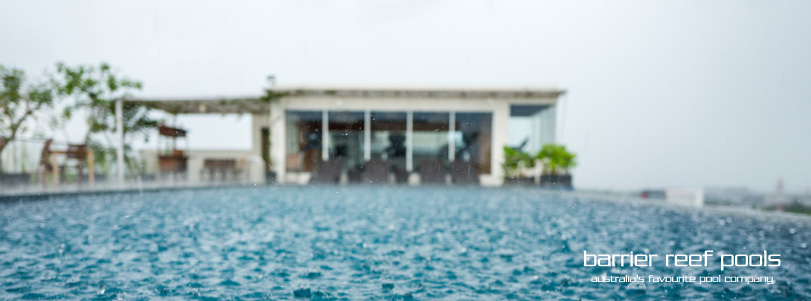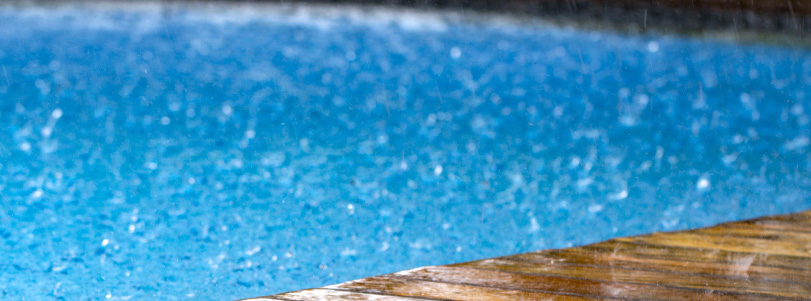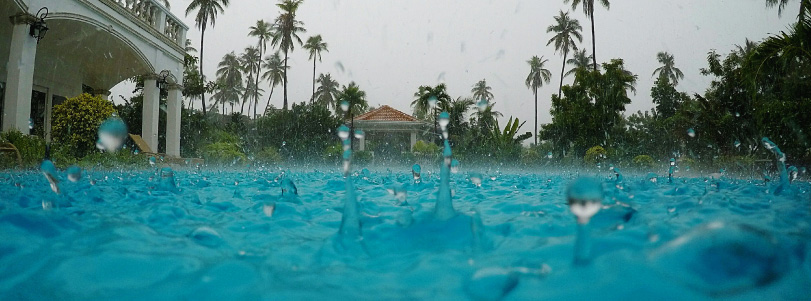A Step-by-Step Guide to Recover Your Flooded Inground Pool
If you have a flooded inground pool, you need to act immediately. You shouldn’t wait for the water to evaporate on its own. The longer your pool sits stagnant, the greater the chance that bacteria and other contaminants will grow in it. In addition to that, there’s also a chance that the chemicals used during clean-up could damage other surfaces around your home or yard—and that’s not something that you want! Read on to find out exactly what you have to do.

Before we get into the real steps you have to take to recover your flooded inground pool, there are a few precautions you need to take:
- Turn off all power sources at the breaker box
- Ensure drains are clear of debris before removing the cover (if possible)
- Remove any furniture near the drain (use caution when walking because these areas tend to be slippery).
- Remove cover from the pool area
Now that this is done, we can get into the actual recovery of the inground pool.
Check the damage caused to the pool because of the flood
The first step to recovering your flooded pool is to inspect the damage caused by the flood water. This can be done in several ways:
- Check for cracks and chips on the pool deck, walls, and steps.
- Inspect lights for cracks or chips in them (especially if they are LED).
- If you find any damage, call a professional right away to make sure your pool is repaired as soon as possible.

Clean your flooded pool deck
To clean your pool deck, you can use a pressure washer to remove any dirt, algae, and mould. You can also use a brush to scrape off any remaining debris on the surface of your pool deck. A vacuum cleaner will be able to pick up all of these pieces and get them out of your swimming area so that they don’t cause any more damage than they already have done. If you have scrub brushes available at home, this is another option for cleaning up after an emergency like this one.
Pool decks are made out of concrete or tile which means that it is going to take some time before they’re completely clean again after being flooded. If you are using a cleaning agent, make sure that you take care of it properly as it might have a negative impact on your deck.
Do not drain the flooded pool until you talk to an expert
Before you drain the flooded pool, talk to a professional and get their recommendation. Always follow instructions given by your technician when they come to recover your inground swimming pool and repair any damages caused by the flood water.
Let your pool stay empty for a few days
After the water has drained, let it stay that way for a few days to help remove any debris that is still in the pool. This will also help prevent the pool from getting dirty while you’re cleaning it up and make sure that all of your equipment is working properly.
While you let the pool stay empty, you should also remove any debris that’s stuck to the walls of your pool. You’ll want to make sure that no insects or small animals are hiding there before filling up again.
Brush the pool thoroughly and vacuum everything after the flood
Brush the pool thoroughly and vacuum everything after the flood. You can use a leaf rake to remove leaves, debris and other debris from your inground pool. Use a vacuum head to remove large debris from the pool. For dirt, algae, and other detritus washed into the swimming pool area by the floodwaters, pool brushes should be used.
During this time, inspect the pool liner for any signs of damage. The best way to do this is by looking for water stains or dark spots on it. If there are no visible cracks or chips on the liner, but you still suspect something might be wrong with it, you can pour some chlorine bleach into a bucket and then sprinkle it around your pool area. This will kill algae that might have accumulated on your inground swimming pool while also getting rid of any mould spores.

Test & Balance Water after a severe weather incident
After a severe weather incident, it’s important to test the water in your inground pool for several factors. These include:
- PH levels (pH) – Testing the pH level of your water can help determine whether the pool needs to be drained and refilled. If you notice an increase or decrease in acidity, this may indicate that something has gone wrong with either the filter or pumps.
- Alkalinity levels – The higher than normal levels of alkalinity in your inground pool can cause corrosion on pipes and equipment over time. You can correct it by adding more limestone or bicarbonate powder into the system’s chemical balance.
- Hardness levels – Hard water is common in inground swimming pools and can result from pH imbalances. It is caused when calcium carbonate builds up on pipes and equipment due to high alkalinity levels in your pool. To fix this, use a softener product that removes any buildup over time.
Shock the Pool water
This is an important step in recovering the flooded inground pool. Shocking the pool means adding a chemical compound to your swimming pool that will oxidize organic compounds in the water. This process can be done by adding an oxidizer/chemical compound directly into your swimming pool or by applying it through a skimmer or filter system. The purpose of this step is to break down any harmful bacteria and other organic compounds in your swimming pool. This way, you can ensure that they do not make it back into the water again after being filtered out during regular cleaning.
Conclusion
Remember that if you are not sure of any particular steps listed above, do not hesitate to call your local pool service company. They can help you with each step and make sure that your pool is ready for use as soon as possible.
A Step-by-Step Guide to Recover Your Flooded Inground Pool
If you have a flooded inground pool, you need to act immediately. You shouldn’t wait for the water to evaporate on its own. The longer your pool sits stagnant, the greater the chance that bacteria and other contaminants will grow in it. In addition to that, there’s also a chance that the chemicals used during clean-up could damage other surfaces around your home or yard—and that’s not something that you want! Read on to find out exactly what you have to do.

Before we get into the real steps you have to take to recover your flooded inground pool, there are a few precautions you need to take:
- Turn off all power sources at the breaker box
- Ensure drains are clear of debris before removing the cover (if possible)
- Remove any furniture near the drain (use caution when walking because these areas tend to be slippery).
- Remove cover from the pool area
Now that this is done, we can get into the actual recovery of the inground pool.
Check the damage caused to the pool because of the flood
The first step to recovering your flooded pool is to inspect the damage caused by the flood water. This can be done in several ways:
- Check for cracks and chips on the pool deck, walls, and steps.
- Inspect lights for cracks or chips in them (especially if they are LED).
- If you find any damage, call a professional right away to make sure your pool is repaired as soon as possible.

Clean your flooded pool deck
To clean your pool deck, you can use a pressure washer to remove any dirt, algae, and mould. You can also use a brush to scrape off any remaining debris on the surface of your pool deck. A vacuum cleaner will be able to pick up all of these pieces and get them out of your swimming area so that they don’t cause any more damage than they already have done. If you have scrub brushes available at home, this is another option for cleaning up after an emergency like this one.
Pool decks are made out of concrete or tile which means that it is going to take some time before they’re completely clean again after being flooded. If you are using a cleaning agent, make sure that you take care of it properly as it might have a negative impact on your deck.
Do not drain the flooded pool until you talk to an expert
Before you drain the flooded pool, talk to a professional and get their recommendation. Always follow instructions given by your technician when they come to recover your inground swimming pool and repair any damages caused by the flood water.
Let your pool stay empty for a few days
After the water has drained, let it stay that way for a few days to help remove any debris that is still in the pool. This will also help prevent the pool from getting dirty while you’re cleaning it up and make sure that all of your equipment is working properly.
While you let the pool stay empty, you should also remove any debris that’s stuck to the walls of your pool. You’ll want to make sure that no insects or small animals are hiding there before filling up again.
Brush the pool thoroughly and vacuum everything after the flood
Brush the pool thoroughly and vacuum everything after the flood. You can use a leaf rake to remove leaves, debris and other debris from your inground pool. Use a vacuum head to remove large debris from the pool. For dirt, algae, and other detritus washed into the swimming pool area by the floodwaters, pool brushes should be used.
During this time, inspect the pool liner for any signs of damage. The best way to do this is by looking for water stains or dark spots on it. If there are no visible cracks or chips on the liner, but you still suspect something might be wrong with it, you can pour some chlorine bleach into a bucket and then sprinkle it around your pool area. This will kill algae that might have accumulated on your inground swimming pool while also getting rid of any mould spores.

Test & Balance Water after a severe weather incident
After a severe weather incident, it’s important to test the water in your inground pool for several factors. These include:
- PH levels (pH) – Testing the pH level of your water can help determine whether the pool needs to be drained and refilled. If you notice an increase or decrease in acidity, this may indicate that something has gone wrong with either the filter or pumps.
- Alkalinity levels – The higher than normal levels of alkalinity in your inground pool can cause corrosion on pipes and equipment over time. You can correct it by adding more limestone or bicarbonate powder into the system’s chemical balance.
- Hardness levels – Hard water is common in inground swimming pools and can result from pH imbalances. It is caused when calcium carbonate builds up on pipes and equipment due to high alkalinity levels in your pool. To fix this, use a softener product that removes any buildup over time.
Shock the Pool water
This is an important step in recovering the flooded inground pool. Shocking the pool means adding a chemical compound to your swimming pool that will oxidize organic compounds in the water. This process can be done by adding an oxidizer/chemical compound directly into your swimming pool or by applying it through a skimmer or filter system. The purpose of this step is to break down any harmful bacteria and other organic compounds in your swimming pool. This way, you can ensure that they do not make it back into the water again after being filtered out during regular cleaning.
Conclusion
Remember that if you are not sure of any particular steps listed above, do not hesitate to call your local pool service company. They can help you with each step and make sure that your pool is ready for use as soon as possible.
